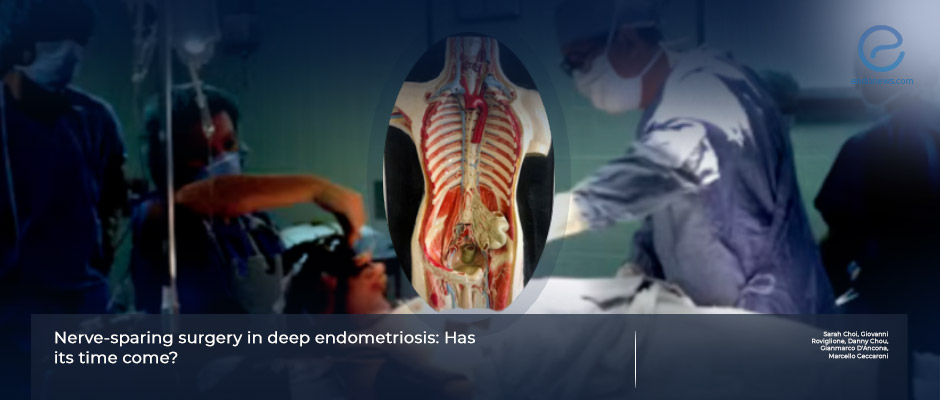Why we should prefer nerve-sparing surgery in deep endometriosis?
Aug 16, 2024
This technique provides a healing effect on voiding dysfunction, dyschezia, and sexual functions.
Key Points
Importance:
- The beneficial effects of nerve-sparing surgery are reducing the postoperative voiding dysfunction as well as the need for intermittent self-catheterization related to nerve injury.
Highlights:
- The current literature focuses on the effectiveness of nerve-sparing surgery in reducing postoperative voiding dysfunction while managing patients with deep endometriosis.
- Reducing dyschezia after bowel surgery and improvement of sexual function after postoperative 6 months comparing preoperative situation are reported as other benefits.
What's done here:
- An Australian and Italian author team reviewed the management of deep endometriosis concerning nerve-sparing surgery to uncover the efficacy in improving quality of life, comparing laparoscopy alone.
- A literature review from the Medline/PubMed database using related keywords in published English and French was performed until January 2024.
Basic outlines:
- The deep endometriosis surgery should consist of visualization, delicate tissue handling, precise and meticulous dissection, and knowing what to cut and not to cut. Preoperative patient consultation and case selection are important as well.
- Postoperative voiding dysfunction is more common in women with parametrial endometriosis, especially those with large, deeply infiltrating nodules in the posterolateral compartment. Autonomic nerve fibers from pelvic splanchnic nerves and inferior hypogastric nerves densely occupy this region.
- Damage to sympathetic fibers leads to urinary, sexual, and rectal dysfunction with specific outcomes depending on the location and type of the affected fiber. The results could be urinary or rectal incontinence, overactive bladder, or sexual dysfunction.
- The application of nerve-sparing techniques during the surgery of posterolateral deep endometriosis potentially prevents de novo dysfunctions in this area. Perioperative complication rates, effectiveness in pain relief, and fertility outcomes are also reported as superior to those who underwent laparoscopy alone.
Lay Summary
Despite its benign nature, deep endometriosis can mimic malignant processes and infiltrate multiple organs, blood vessels, ligaments, and nerves within the pelvis. When conservative medical management fails, the need for surgical excision of endometriotic lesions arises. The surgeons aim to complete the removal of lesions without harming urinary, bowel, and sexual functions. For this reason, they started using nerve-sparing techniques two decades ago to treat deep endometriosis.
This technique involves identifying and preserving anatomic nerve fibers to minimize surgical denervation of sympathetic and parasympathetic systems and prevent postoperative visceral dysfunctions, including urinary, sexual, and rectal problems.
Dr.Choi from the Sydney Women's Endosurgery Center, St George Hospital, New South Wales, Australia, and colleagues from Verona, Italy, performed a wide literature review and overviewed this issue, covering neuroanatomy, surgical nerve injuries, and reported outcomes.
The review started by indicating the importance of knowing pelvic neuroanatomy well to perform deep infiltrating endometriosis surgery to prevent injuries to autonomic nerve fibers. Then, a comprehensive update on surgical techniques was explained, including the practical application and surgical outcomes as documented in the literature. Finally, the authors discussed nerve-sparing surgery's current and future impact on managing endometriosis.
The authors also determined the practice points of nerve-sparing surgery and the future research agenda for this issue. This review was recently published in Best Practice & Research in Clinical Obstetrics & Gynaecology.
Research Source: https://pubmed.ncbi.nlm.nih.gov/38981835/
nerve-sparing surgery pelvic anatomy voiding dysfunction sexual dysfunction sympathetic fibers rectal incontinence functional outcomes deeply invaded endometriosis.

